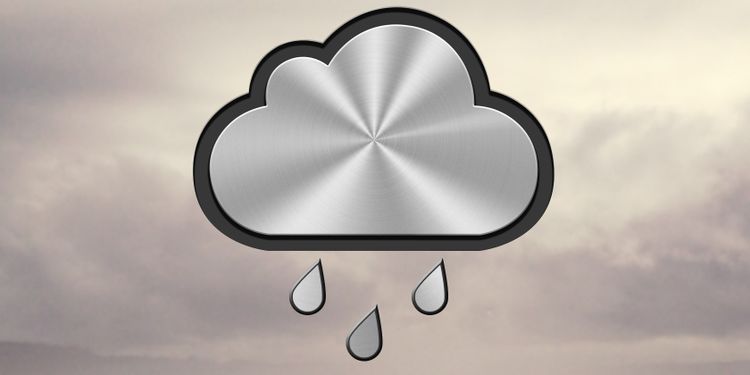If you have issues with iCloud Drive, don’t despair. Here’s how to resolve iCloud syncing issues and get it working again.
Keep reading to learn more.
1. Restart and Wait
iCloud can take some time to kick in when you make a change. According to some reports, this can be up to 10 minutes.
You might find that your problem resolves itself with a bit of patience, but while you’re at it, you can also try restarting all affected devices. You also may want to plug your device in—sometimes we find that photos won’t sync to iCloud until the phone is charging.
2. Check You’re Using the Right Account
It might sound obvious, but if you’re not using the same iCloud account on both devices, then they’ll never sync correctly. Head to Settings > [Your Name] on iOS or System Preferences > Apple ID on macOS and check which account is currently associated with the device.
You can only have one iCloud account active at a time, so make sure they match up. If they don’t, you will need to sign out of the incorrect account and log in with the correct credentials.
3. Make Sure iCloud Is Working Properly
Every service experiences downtime at some point. While most planned outages occur at night when you’re asleep, catastrophic failure or human error can sometimes bring even the most reliable services down.
To check Apple’s current iCloud status, head to Apple’s System Status page and look for the green dots. Any ongoing issues should appear at the bottom of the screen.
4. Ensure You’ve Enabled iCloud for Your App
There are some elements you can change in your Settings (iOS) or System Preferences (macOS) in order to remedy apps that won’t sync.
On your iOS device, head to Settings > [Your Name] > iCloud and make sure the app you want to sync is listed and enabled. You can also try toggling this off and back on to restart the sync process.
Apps that have access to iCloud Drive on macOS will appear under System Preferences > Apple ID > iCloud.
5. Check That Apps Have Cellular Access
Do you have trouble syncing to iCloud while on mobile data, but not on Wi-Fi? You may have disabled cellular access for some apps.
Head to Settings > Cellular and scroll down to find a list of apps on your phone. Any apps that have their slider turned off will only work on Wi-Fi. Try enabling data access for any apps that you want to sync all the time, but note this may increase your data usage.
6. Rule Out Date and Time Discrepancies
You can run into a lot of problems when your iPhone’s date and time aren’t current. Many apps will simply refuse to connect to the internet at all. In order to avoid these problems, you can set the time to automatically update, which will keep your devices in sync and avoid these issues.
On iOS, head to Settings > General > Date & Time > Set Automatically. On macOS, you can do this from System Preferences > Date & Time > Time Zone.
7. Check That You’re Syncing the Right Folder
For apps that allow you to customize which folder you use to store data, ensure that the paths match up in both instances. You should make sure that your various iOS and macOS apps are looking for data in the same location, if applicable.
8. Reset and Restore Your Device
None of the above has helped and your device won’t access or sync iCloud data at all? You might want to take a stronger step and reset your phone to clear up any lingering issues. Before you do so, you should back up your phone to avoid losing any data.
To reset and restore your iPhone, go to Settings > General > Reset and select Erase all Content and Settings from the menu.
You can restore the backup you made when you set up the phone afresh. Wait for the Apps & Data screen to load, tap Restore from iCloud Backup, then sign in with your Apple ID. Once you’re finished, your device will be near-identical to how you started, except you’ll need to add or authorize your various accounts again.
Hopefully, this will clear up whatever issue you had with iCloud Drive. If it still doesn’t work, check out some of the most common iCloud issues and how to fix them.
9. Look Into App-Specific Support
If you’ve got an app that uses data syncing to transfer between different platforms, there’s a good chance the developer offers help documentation to help you overcome your issues. Much of the time, developers can pinpoint exact files and folders you should delete in order to solve your issue.
A few apps that include specific guides to solving iCloud issues include DayOne, 1Password, and Ulysses. Search online for specific help if your issue lies with another app.
10. Use an iCloud Alternative
Many applications give you a choice of whether or not to use iCloud. If you can avoid using it, you’ll sidestep many of the issues that have plagued the service.
For example, apps like DayOne and 1Password both allow you to use Dropbox. Plus, third-party cloud storage solutions often provide you with more space and less hassle. And don’t worry, you can still use other iCloud features, like Find My iPhone and email.
Some of the best cloud storage alternatives include Dropbox, Google Drive, and OneDrive.
Make It Easier to Use iCloud
Hopefully, these tips helped you clear up your iCloud Drive issues; most users have reported that one of these tips helped to get them back on track. While iCloud isn’t perfect, its integration with Apple platforms makes it the de facto choice for many users. Now you can enjoy it as Apple intended.


